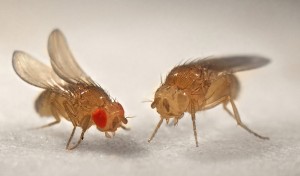Enter your address to receive notifications about new posts to your email.
Articles tagged Human Disease
(94 results)
-
‘Omics’ data improves breast cancer survival prediction
Precise predictions of whether a tumor is likely to spread would help clinicians and patients choose the best course of treatment. But current methods fall short of the precision needed. New research in this month’s issue of GENETICS reveals that profiling primary tumor samples using genomic technologies can improve the accuracy of breast cancer survival predictions…
-
How bacteria dodge new antibiotic candidates
Antibiotics, a vital tool for fighting infections, were originally products of nature—the first antibiotic was serendipitously discovered in mold contaminating a bacterial culture. As antibiotic resistance becomes an increasingly serious threat, scientists are attempting to wring another type of pathogen-fighting drug from the wild: antimicrobial peptides. Antimicrobial peptides, or AMPs, are found in almost every…
-
Inbred Neanderthals left humans a genetic burden
The Neanderthal genome included harmful mutations that made the hominids around 40% less reproductively fit than modern humans, according to estimates published in the latest issue of GENETICS. Non-African humans inherited some of this genetic burden when they interbred with Neanderthals, though much of it has been lost over time. The results suggest that these harmful…
-
The basic premise
American titans of industry are approaching the business of medical philanthropy just as they do their day jobs: in a big way. It’s not unusual to hear of gifts in the hundreds of millions of dollars, if not the occasional one with close to yet another digit to the left. The inevitable institutes and research…
-
Overly fastidious flies shed light on neurofibromatosis
Fruit flies that devote an excessive amount of time to grooming themselves could serve as a powerful tool for understanding the inherited disorder neurofibromatosis, type 1 (NF-1), report researchers in the latest issue of G3: Genes|Genomes|Genetics. NF-1 leads to the development of benign tumors in the peripheral nervous system. Common complications of NF-1…
-
Behind the podium: NIH Director Francis Collins, Keynote Speaker at TAGC
In preparation for The Allied Genetics Conference (TAGC), set to take place in Orlando this July, Genes to Genomes is getting the inside scoop from many of the outstanding keynote speakers in our “Behind the Podium” series. Here, GSA member Sarah Neuman interviews National Institutes of Health Director, Francis Collins. As the former…
-
An early TAGC abstract submission: Bess Frost
Bess Frost submitted the second abstract for The Allied Genetics Conference (TAGC), less than 30 minutes after the first submission. Find out more about her work and why she’s coming to TAGC. Bess Frost, PhD Assistant Professor Barshop Institute for Longevity & Aging Studies University of Texas Health Science Center at San Antonio Faculty…
-
New Faculty Profile: Santhosh Girirajan
New Faculty Profiles showcase GSA members who are establishing their first independent labs. If you’d like to be considered for a profile, please complete this form on the GSA website. Santhosh Girirajan Assistant Professor (since 2012) Department of Biochemistry and Molecular Biology Department of Anthropology The Pennsylvania State University Lab website Twitter: @GirirajanLab Research program:…
-
Mapping structural variants with nanochannel arrays
Short-read sequencing has fueled the acceleration of genetic research But though these next-generation methods are fast and efficient, they can’t do everything well. One important area in which short-reads fall short is detecting structural variants (SV), where chunks of the genome are deleted, inserted, repeated, inverted, or in some other way shuffled around compared to…
-
Sequencing so fast you’ll think you’re on CSI:
If you’ve ever watched a procedural crime-solving show on television, you’re sure to have seen a lab tech magically produce results from a complicated assay in mere minutes. If you’re a wet lab scientist, you’ve probably found yourself wishing that “CSI technology” were real so you didn’t have to spend your whole day running PCRs…
-
Anxious chickens as a model for human behavior
Chickens that “chicken out” in unfamiliar surroundings may shed light on anxiety in humans, according to research published in the January 2016 issue of the journal GENETICS. Domestic chickens are much less anxious than their wild cousins, the red junglefowl. The new research identifies genes that contribute to this behavioral variation and reveals that several…


![Molecular model of penicillin, the first antibiotic discovered. Later, antimicrobial peptides were also found to have antibiotic properties. By Science Museum London / Science and Society Picture Library [CC BY-SA 2.0 (http://creativecommons.org/licenses/by-sa/2.0)], via Wikimedia Commons.](https://s36063.pcdn.co/wp-content/uploads/2016/06/Molecular_model_of_Penicillin_by_Dorothy_Hodgkin_9663803982-300x212.jpg)








